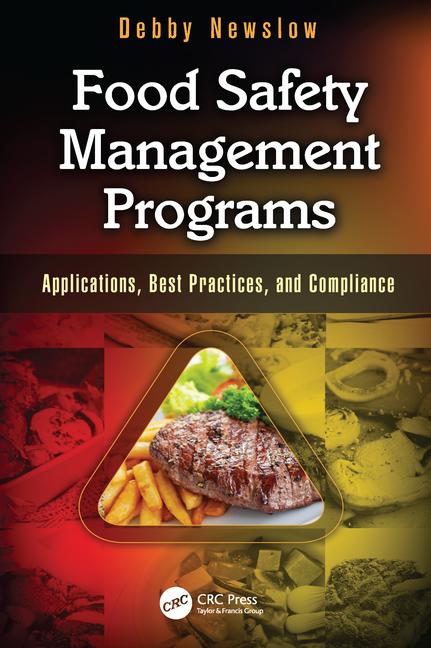Building a Skilled and Capable Workforce for the Food Industry: Simplifying Food Safety Language

Image credit: Andresr/E+ via Getty Images
In recent times, Frank Yiannas, the former U.S. Food and Drug Administration (FDA) Deputy Commissioner for Food Policy and Response, has been a prominent voice on LinkedIn, calling for rethinking and innovation in food safety practices to protect the consumer. His calls come amid a troubling series of food recalls, foodborne illness outbreaks, food allergen issues, and other food safety challenges in the U.S. Yiannas' use of the term "rethinking" emphasises the urgent need to reassess our approach to food safety—not just at the policy level, but also on the kitchen/production floor, where daily food safety practices are implemented. This is a global issue that is not confined to any one country.
This article is designed to contribute to this conversation, offering a practical perspective on improving food safety practices through simplified language, strategic training, and workforce development.
Introduction
Food safety training across the food supply chain often involves technical language derived from food law, certification standards, accredited training standards, and compliance frameworks. Phrases like "identify food safety hazards" dominate training programs and resources. But does this language promote true understanding and effective implementation among all food handlers and leaders? It also raises a critical, broader question: if management and employees do not fully grasp how a food safety management system works—or how it is supposed to work—then how can they improve it?
Bridging the Gap Between Knowledge and Practice
Improving food safety practices does not necessarily require a complete overhaul of systems. Sometimes, the solution lies in simplifying the language we use. The phrase "identify food safety hazards" is a good example. While it is accurate and based on legal and technical requirements, it can be vague or intimidating for those without a strong background in food safety. A more practical term, such as "spot food safety hazards," could drive better understanding and action.
The author does not suggest diluting the importance of food safety or reverting to meaningless expressions like "piping hot." Accuracy and correctness are critical in food safety. However, simplifying language to make it relatable and actionable for all levels of employees could bridge the gap between compliance and competence.
The Case for Simplification
Language shapes behavior. Using straightforward, action-oriented language like "spot hazards" encourages employees to engage actively with tasks and processes in their work setting. It prompts a more visual, hands-on approach to food safety, which aligns with how people naturally observe and process information in their surroundings.This shift in language could lead to:
- Improved operational understanding: Employees better grasp their role and how their actions contribute to prevention of food safety risks.
- Enhanced communication: Simpler terms promote clearer communication across teams, especially in multicultural workplaces or for those with varying literacy levels.
- Stronger food safety culture: Confident employees take ownership of food safety practices.
Making an Impact
Adopting simpler, action-oriented language might seem like a small or unnecessary change, but its impact can be profound. By improving understanding of food safety processes across all levels of a food business, this approach could lead to:
- Lower rates of foodborne illness
- Fewer product recalls
- Enhanced consumer trust and brand reputation.
Ultimately, the question is not whether we can afford to change how we communicate food safety—it is whether we can afford not to.
Training for Competence, Not Compliance
In a previous article, the authors have stated that food safety training must go beyond ticking boxes for compliance.1 True competence requires knowledge and practical skills to enable employees to apply what they learn on the job confidently. The language used in training plays a critical role in shaping how well employees absorb and act on what they learn.
This straightforward approach is particularly effective across all food industry sectors, which rely on a wide and diverse workforce. Simplified, accessible language can help employees at all levels—regardless of their cultural, educational, or linguistic differences—better understand the critical role they play in producing safe food.
The Impact of a Well-Trained Workforce
A well-trained and knowledgeable employee provides the best protection against food safety risks. However, their value extends beyond hazard prevention. Proper training equips employees with the information and skills needed to be more active in maintaining and improving food safety systems. This raises the status of their roles, fosters pride and accountability, and can even reduce employee turnover. Employees who feel that they are a part of something important and are recognized for their contributions are far more likely to stay engaged and committed.
Effective training should:
- Simplify complex concepts: Break down technical terms into relatable, actionable language
- Encourage hands-on practice: Employees learn best by doing, so training should include exercises that replicate workplace scenarios
- Foster problem-solving skills: Employees should be equipped to recognize, analyse, and address potential hazards—not just follow checklists.
Building Skills for Long-Term Impact
Training must also prioritize continuous skills development to adapt to changing risks, technologies, and operational needs. This involves moving away from one-time sessions and embracing ongoing learning opportunities, such as micro-learning modules, on-the-job coaching, and peer-to-peer mentoring.
This training initiative is critical, particularly in the foodservice and hospitality sectors, where high turnover often undermines food safety practices. By linking training to career development, food businesses can strengthen their food safety systems to attract and retain skilled employees.
Starting a Practical Conversation
This article aims to generate a practical conversation about the role of simplified communication and robust training in food safety. By adopting straightforward language and focusing on skill development, we can better equip our employees to handle the challenges of modern approaches to producing food and distribution.
Leaders up and down the food supply chain have a pivotal role to play in this transformation. By championing strategic training initiatives, they can empower their teams, strengthen food safety systems, and restore consumer trust.
As Frank Yiannas advocates for rethinking food safety at every level, the conversation needs to include actionable steps for those who work closest to the risks—and the solutions. The future of food safety depends not just on innovative technologies or stricter food laws, but primarily on the people who make safe food possible every day.
By working collaboratively, we can create a skilled and capable workforce that aspires to maintain the highest standards of food safety, benefiting businesses, consumers, and public health.
Reference
- Thomson, A. and M. Wilson. "The Business Case for Building Food Safety Skills." Food Safety Magazine. October 28, 2024. https://www.food-safety.com/articles/9861-the-business-case-for-building-food-safety-skills.
Looking for a reprint of this article?
From high-res PDFs to custom plaques, order your copy today!






